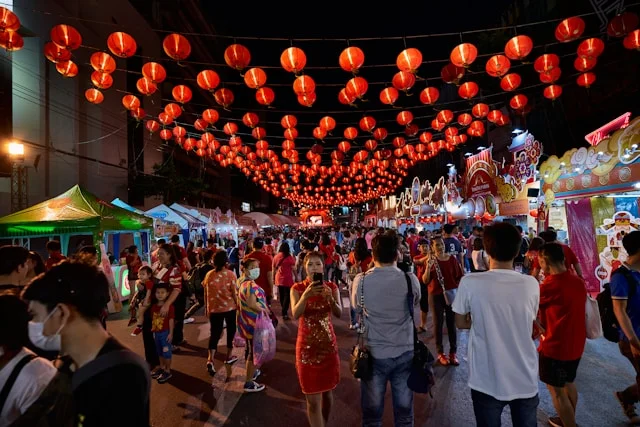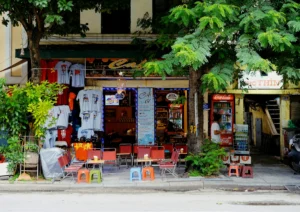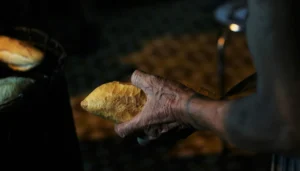Chinese New Year: The Spring Festival
1. Preparations and Traditions
Chinese New Year, also known as the Spring Festival, is the most important and widely celebrated festival in China. It marks the beginning of the lunar new year and is characterized by a series of customs and traditions that symbolize good fortune, happiness, and renewal. Key preparations include:
- Spring Cleaning: Homes are thoroughly cleaned to sweep away any bad luck and make way for incoming good fortune.
- Decorations: Red lanterns, couplets, and paper cuttings are used to decorate homes and streets, warding off evil spirits and inviting prosperity.
2. New Year’s Eve and New Year’s Day
The eve of Chinese New Year is marked by a grand family reunion dinner, often featuring traditional dishes such as dumplings, fish, and niangao (glutinous rice cake). At midnight, fireworks light up the sky, symbolizing the warding off of evil spirits and the welcoming of the new year. The celebrations continue on New Year’s Day with:
- Lion and Dragon Dances: These performances are believed to bring good luck and drive away evil spirits.
- Red Envelopes: Elders give red envelopes filled with money to children as a gesture of good fortune.
Mid-Autumn Festival: A Celebration of Reunion
1. Mooncakes and Family Gatherings
The Mid-Autumn Festival, also known as the Moon Festival, falls on the 15th day of the eighth lunar month when the moon is at its fullest and brightest. It is a time for family reunions and the sharing of mooncakes, a traditional pastry filled with various sweet or savory fillings. Families gather to:
- Admire the Moon: Moon gazing is a key activity, often accompanied by telling tales and legends about the moon.
- Lantern Displays: Colorful lanterns are lit and displayed, symbolizing the light of the moon and the wish for a bright future.
2. Traditional Legends
The festival is steeped in folklore, the most famous being the legend of Chang’e, the Moon Goddess. This story adds a mystical dimension to the festival, making it a time of storytelling and cultural reflection.
Dragon Boat Festival: Commemorating Qu Yuan
1. Dragon Boat Races
The Dragon Boat Festival, or Duanwu Festival, is celebrated on the fifth day of the fifth lunar month in honor of the ancient poet Qu Yuan. The highlight of the festival is the thrilling dragon boat races, where teams row in unison to the beat of drums, competing for victory and honoring the spirit of Qu Yuan.
2. Eating Zongzi
Another central tradition is the preparation and consumption of zongzi, glutinous rice dumplings wrapped in bamboo leaves. This custom commemorates the local people’s efforts to keep fish from eating Qu Yuan’s body by throwing rice into the river.
Lantern Festival: The Culmination of Chinese New Year
1. Lantern Displays and Lion Dances
The Lantern Festival marks the end of the Chinese New Year celebrations on the 15th day of the first lunar month. Cities and towns across China are adorned with colorful lanterns, and lion dances are performed to bring good luck and prosperity. Activities include:
- Lantern Riddles: People write riddles on lanterns and others try to solve them, adding an element of fun and intellectual challenge to the festivities.
- Tangyuan: Families gather to eat tangyuan, sweet glutinous rice balls, symbolizing reunion and harmony.
Qingming Festival: Honoring Ancestors
1. Tomb Sweeping and Offerings
The Qingming Festival, also known as Tomb Sweeping Day, is a time to honor and remember ancestors. Families visit the graves of their loved ones to clean the tombstones and make offerings of food, tea, and joss paper. This practice reflects the deep-rooted tradition of ancestor worship in Chinese culture.

2. Outings and Spring Activities
In addition to tomb sweeping, the Qingming Festival is also a time for enjoying the spring weather. People often go on outings, fly kites, and engage in outdoor activities, celebrating life and the renewal of nature.
Double Ninth Festival: Respecting the Elderly
1. Climbing Mountains and Drinking Chrysanthemum Wine
The Double Ninth Festival, or Chongyang Festival, is celebrated on the ninth day of the ninth lunar month. It is a day to respect and honor the elderly. Traditional activities include:
- Mountain Climbing: People hike to the top of mountains to ward off evil spirits and enjoy the autumn scenery.
- Chrysanthemum Wine: Drinking chrysanthemum wine is believed to promote longevity and health.
2. Chrysanthemum Displays
Chrysanthemums, which bloom during this time, are displayed and admired. The flower is a symbol of autumn and resilience, reflecting the spirit of the festival.
Laba Festival: A Prelude to Chinese New Year
1. Eating Laba Congee
The Laba Festival is celebrated on the eighth day of the twelfth lunar month, marking the start of the Chinese New Year preparations. The key tradition is the eating of Laba congee, a nutritious porridge made with various grains, beans, and dried fruits. This practice is believed to ward off evil spirits and ensure good health in the coming year.
2. Honoring the Buddha
In some regions, the festival also involves rituals to honor the Buddha, reflecting its origins as a Buddhist festival. Temples distribute free Laba congee to the public, symbolizing kindness and charity.


